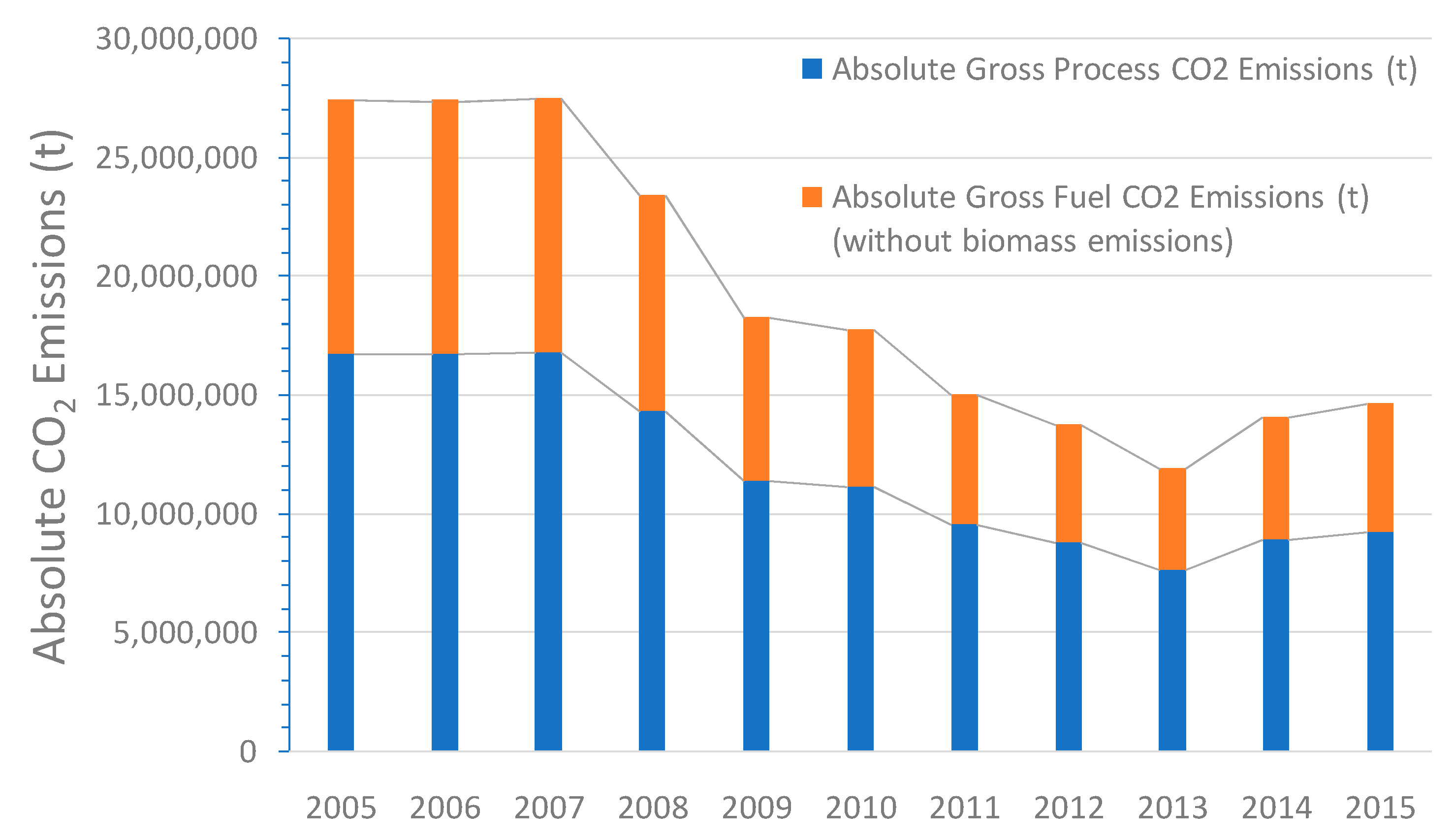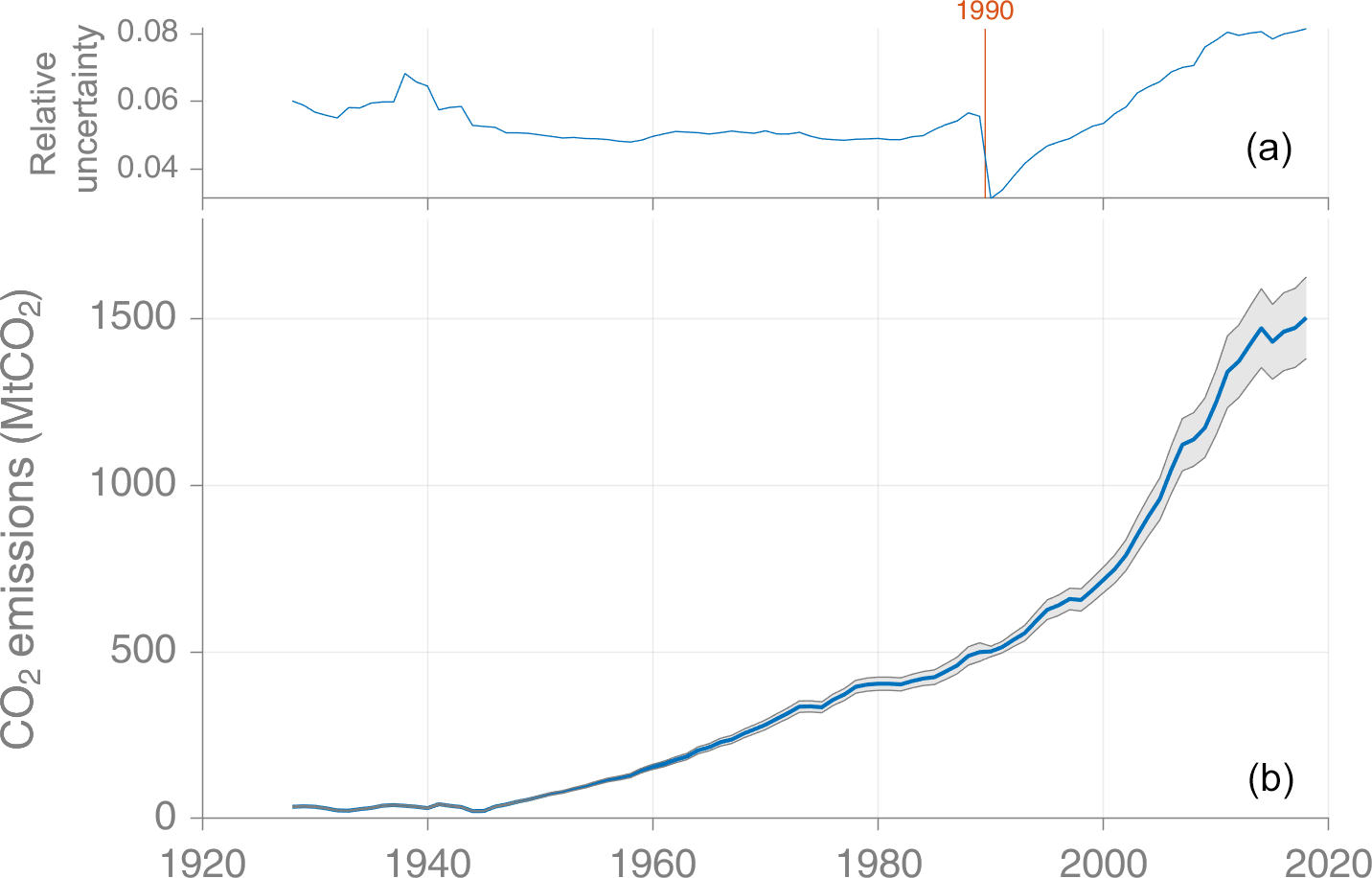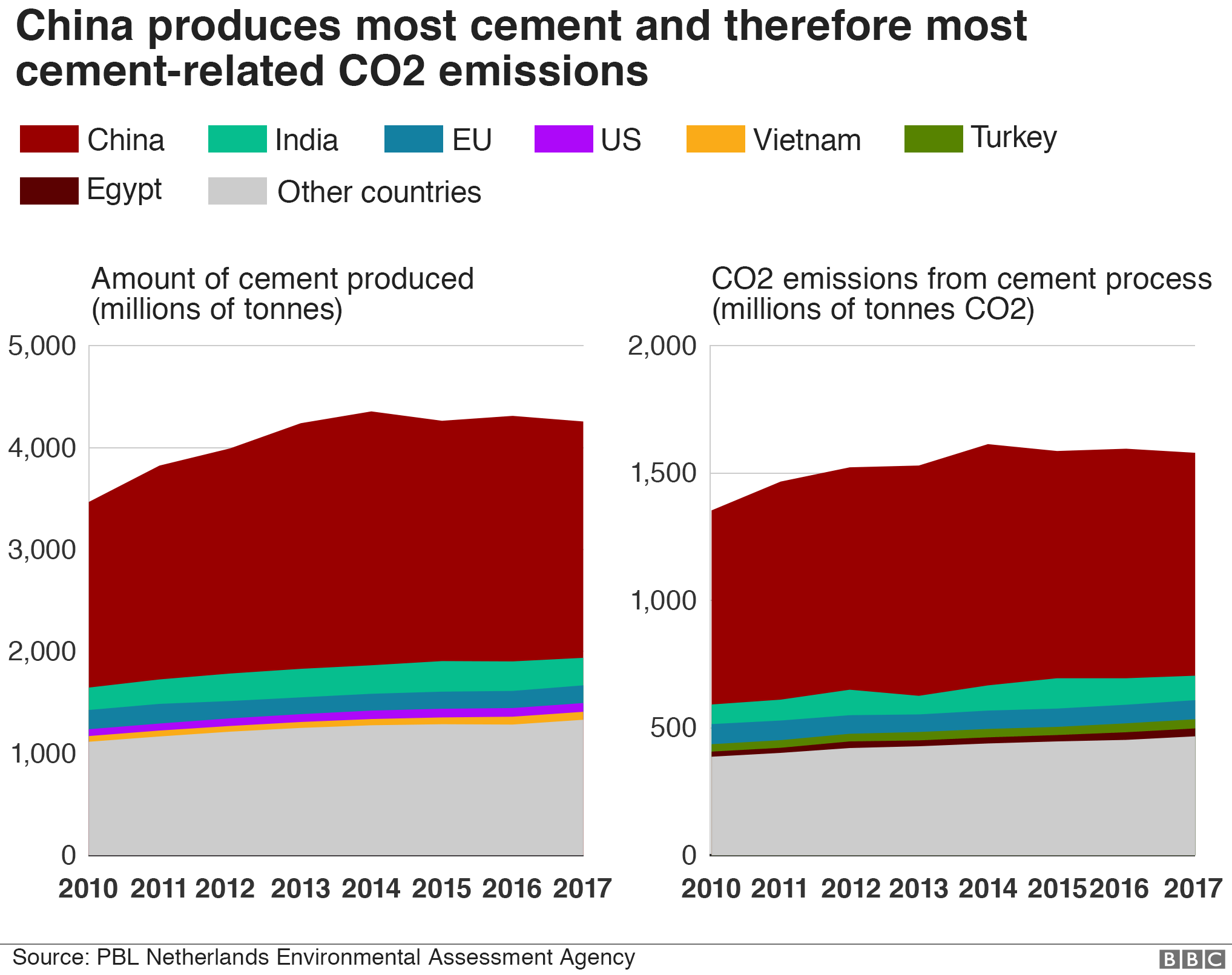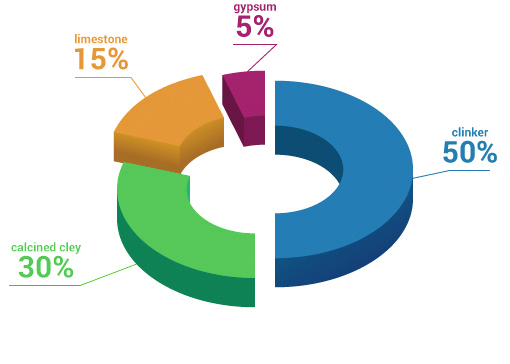Think tank Chatham House over 4 billion metric tons of. The other half is finding ways to use less.
 Applied Sciences Free Full Text Carbon Dioxide Uptake By Cement Based Materials A Spanish Case Study Html
Applied Sciences Free Full Text Carbon Dioxide Uptake By Cement Based Materials A Spanish Case Study Html
If the cement industry were a country then it would be the largest carbon emitter after China and the US.

Cement and carbon emissions. According to a 2018 report from UK. The companies aim to develop solutions to decarbonize the cement production process and transportation To read the rest of this article please login with your CW Group Single Sign-On first. Cemex has partnered with UK-based oil company BP to accelerate the progress of its ambition for net-zero CO 2 concrete by 2050.
Of this 14 Gt CO2 is related to the process-related emissions from chemical reaction during the calcination process 06 Gt CO2 is related to fuel use also called Direct emissions and 03 Gt CO2 was from electricity use also called Indirect emissions. BP and Cemex partner to reduce the cement industrys carbon emissions Published on. 17 May 2021.
The British oil major on Thursday said it. Why does cement emit so much CO2. Be carbon-neutral in its own operations have 30 per cent of its spend with suppliers with similar decarbonisation targets cut customer-associated emissions per revenue by 56 per cent or seven per cent YoY.
Globally CO2 emissions from cement production were estimated at 829 MMTCO2 in 2000 7 approximately 34 of global CO 2 emissions from fossil fuel combustion and cement production. Cement is the source of about 8 of the worlds carbon dioxide CO2 emissions according to think tank Chatham House. Cement production also is a key source of CO2 emissions due in part to the significant reliance on coal and petroleum coke to fuel the kilns for clinker production.
Cement production currently causes 8 percent of global carbon emissions. This is a principle reason cement emissions are often considered difficult to cut. BP is partnering with Cemex to reduce carbon emissions from the cement industry one of the hardest sectors to decarbonize globally.
Since this CO2 is released by a chemical reaction it can not be eliminated by changing fuel or increasing efficiency. In addition to combustion-related. Cement is one of the global economys most carbon-polluting industries.
The cement sector is the third-largest industrial energy consumer in the world responsible for 7 of industrial energy use and the second industrial emitter of carbon dioxide with about 7 of global emissions. Responsible for about 8 percent of global carbon dioxide CO2 emissions in 2015 if it were ranked with individual countries the cement industry would be the third-largest greenhouse-gas emitter in the world behind only China and the United States. If the cement industry were a.
Such solutions include the transition to reduced-emissions power and vehicles energy efficiency-improvements carbon. Key strategies to cut carbon emissions in cement production include improving energy efficiency switching to lower-carbon fuels promoting material efficiency to reduce the clinker-to-cement ratio and total demand and advancing process and technology innovations such as CCS. These goals are on top of the MissionZero ambition to provide zero-emission technology to the mining and cement industries by 2030.
Cement production alone excluding other aspects of construction accounts for around 8 of global CO₂ emissions about half of which results from chemical reactions inherent in the production. Around half of the emissions from cement are process emissions arising from the reaction above. The powdery substance is a key ingredient in concrete which has been called the most destructive material on Earth.
BP and Cemex partner to reduce the cement industrys carbon emissions. Developing new cement manufacturing technologies is only half the battle against cements carbon emissions. The effect of cement production on the environment is considerable.
Global cement industry emitted around 23 gigaton of CO2 Gt CO2 emissions in 2019. The partners have signed a memorandum of understanding to develop cement production and transport decarbonisation solutions. Cement is responsible for around 7 per cent of global carbon emissions.
The latter two contribute the most to direct emissions reductions in the Sustainable Development Scenario SDS. The production of cement the binding element in concrete accounted for 7 of total global carbon dioxide emissions in 2018.
Chart China S Cement Carbon Dioxide Emissions Have Ballooned Statista
 Quantifying Co2 Emissions From China S Cement Industry Sciencedirect
Quantifying Co2 Emissions From China S Cement Industry Sciencedirect
Chart The Carbon Age 150 Years Of Co2 Emissions Statista
 Whittling Away At Carbon Emissions From Cement Eventually
Whittling Away At Carbon Emissions From Cement Eventually
 Climate Change The Massive Co2 Emitter You May Not Know About Bbc News
Climate Change The Massive Co2 Emitter You May Not Know About Bbc News
Https Essd Copernicus Org Articles 10 195 2018 Essd 10 195 2018 Pdf
 Essd Global Co2 Emissions From Cement Production 1928 2018
Essd Global Co2 Emissions From Cement Production 1928 2018
 Climate Change The Massive Co2 Emitter You May Not Know About Bbc News
Climate Change The Massive Co2 Emitter You May Not Know About Bbc News
 1 Annual Carbon Dioxide Emissions Of The Cement Industry And The Share Download Scientific Diagram
1 Annual Carbon Dioxide Emissions Of The Cement Industry And The Share Download Scientific Diagram
 Climate Change Decreasing Amount Of Co2 At The Production Of Cement
Climate Change Decreasing Amount Of Co2 At The Production Of Cement
 Co2 Emissions Related To The Production Of Cement And Its Ratio To Download Scientific Diagram
Co2 Emissions Related To The Production Of Cement And Its Ratio To Download Scientific Diagram
 Kees Van Der Leun On Twitter In 2015 Global Co2 Emissions From Fossil Fuels And Cement Production Stabilized For The First Time May This Be The Start Of The Descent Https T Co M0l523wk2i
Kees Van Der Leun On Twitter In 2015 Global Co2 Emissions From Fossil Fuels And Cement Production Stabilized For The First Time May This Be The Start Of The Descent Https T Co M0l523wk2i
 New Cement Blend To Cut Co2 Emissions By Up To 30 Cement Lime Gypsum
New Cement Blend To Cut Co2 Emissions By Up To 30 Cement Lime Gypsum
 Global Warming Has Concrete Problem When It Comes To Co2 Ecori News
Global Warming Has Concrete Problem When It Comes To Co2 Ecori News

No comments:
Post a Comment
Note: Only a member of this blog may post a comment.